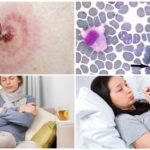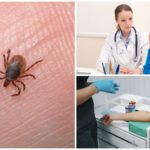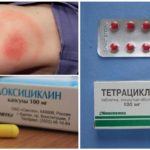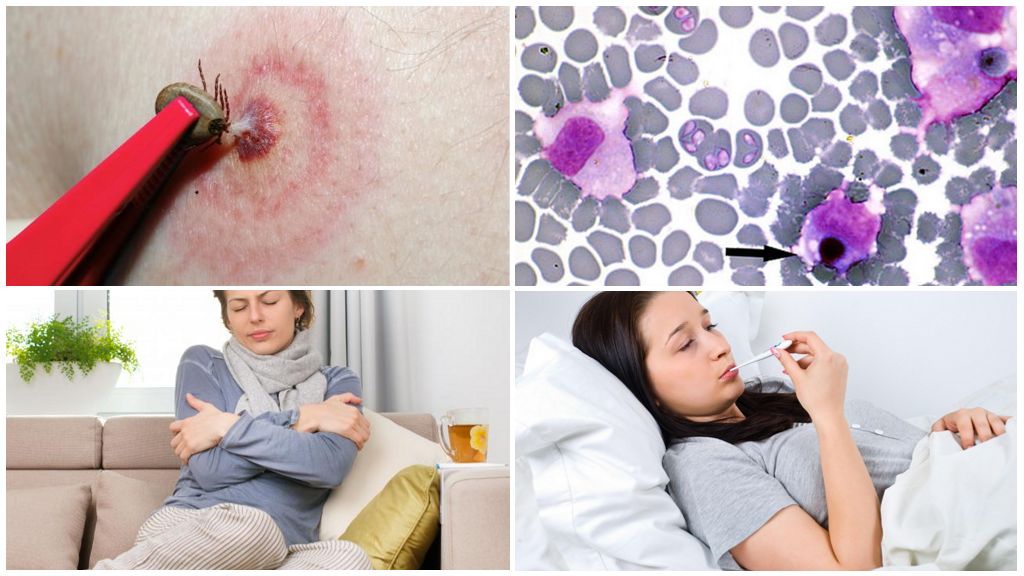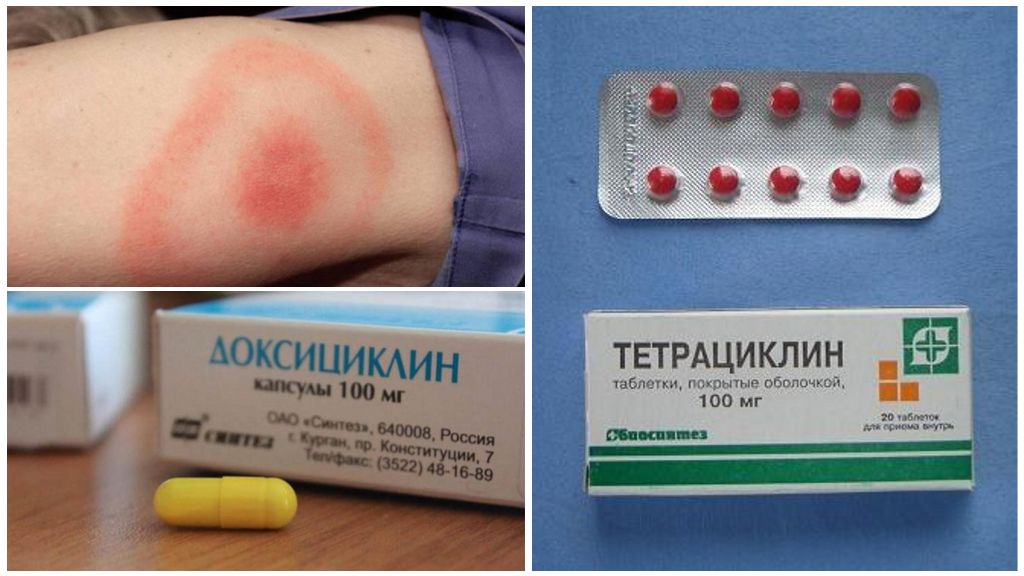Monocytic ehrlichiosis in humans
Content
- Monocytic ehrlichiosis in humans
- Diagnosis of monocytic ehrlichiosis in humans
- Treatment of monocytic ehrlichiosis in humans
Tick-borne ehrlichiosis is a disease that is caused by the bacteria Ehrlichia. For many years it was believed that only sheep, goats, deer, horses, dogs and cattle could become ill. But later, scientists were able to detect the causative agent in human blood. Ehrlichiosis suppresses the immune system and makes a person vulnerable to many diseases.
Some historical facts
Ehrlichs were previously found only in animals, so the veterinary industry was more interested in the diseases they provoke. The concept of these parasites changed dramatically when, in 1953, the Ehrlichia sennetsu species were found by Japanese researchers in the human body.
On a note!
Scientists have been studying the fever to sennet, which had a great similarity to infectious mononucleosis. As a result, it was possible to prove that the disease was provoked by one of the varieties of Ehrlichia.
Further, the bacteria gained great interest of researchers and over the course of 20 years they were able to isolate several more species that can cause diseases in humans. Today, there are about 6 species of pathogen.
Symptoms of Ehrlichiosis in Man
The disease is most prevalent in Mexico and the USA. In Russia, it is found very often, mainly in rural areas.
Important!
Ehrlichiosis is not transmitted from person to person.
Ehrlichiosis from a tick can be diagnosed in people of different ages and genders. But according to statistics, the average age of patients is at least 42 years old. However, there are cases when ehrlichiosis after a tick bite was also found in children.
The development of the disease begins gradually. The first 2-3 weeks after the tick bite ehrlichiosis is in the incubation period. In more rare cases, the symptoms do not appear for several months.
Further symptoms are activated suddenly and very quickly increases its manifestation. There are several types of ehrlichiosis from the tick in humans, they differ in the type of pathogen. Symptoms may also be somewhat different.
Common signs of the disease:
- Sudden fever.
- Chills.
- Heat.
- Headaches.
- Muscle pain.
- Joint pain
- Nausea.
- Vomiting.
- Diarrhea.
Important!
In advanced cases, disorientation in space, renal failure, difficulty in breathing, convulsions may occur. In the most severe cases, the disease ends with coma and death.
Types of pathogens and manifestations of the disease:
- Chaffeensis. Provokes monocytic human ehrlichiosis. Signs are an increase in the submandibular and other lymph nodes, the development of meningitis. There were also marked lesions of the facial nerve of the central type. The level of bilirubin increases, so there is also a darkening of urine.
- Equ.It is the causative agent of granulocytic ehrlichiosis. It is for this type of disease that a person has joint pain, headaches, an increase in body temperature of up to 40 degrees. Signs of the disease are increasing every day. The patient feels fatigue, fatigue, marked insomnia. At the initial stage of the disease, a pale pink rash appears on the body. It affects almost all surfaces, except for the palms and soles. The size of a single pimple does not exceed 10 mm.
On a note!
In rare cases, ehrlichiosis is asymptomatic and the person does not even know about the infection. Strong immunity is able to cope with the pathogen and overcome it.
How does the infection occur?
The causative agent of the disease falls inside the person at the time of tick mite on the body of the victim. Erlichia penetrate along with parasite saliva. Then they spread throughout the body along with the bloodstream. The causative agent attacks leukocytes and significantly reduces the protective functions of the body, suppressing the immune system.
On a note!
Ehrlichs are gram-negative, rickettsy-like intracellular parasites that quickly collapse in air.The main source of habitat are dogs and deer.
It will be possible to detect signs of infection with ehrlichiosis only after an incubation period, when a sufficient number of parasites are formed in the human body, which can significantly complicate the work of the whole organism. Proper treatment will quickly stop the reproduction of the pathogen and cure a person.
Diagnosis of the disease in humans
Given that ehrlichiosis in humans after a tick bite does not have specific manifestations, they are often confused with other diseases. Similar symptoms are observed in sepsis, influenza, upper respiratory tract infections, rickettsiosis and many others.
A timely visit to the doctor will speed up recovery and facilitate the manifestations of the disease. To do this, after detecting a tick bite, it is important to monitor the state of your body. At the time of contacting the doctor, information may be helpful:
- Prescription tick bite.
- When the first signs appeared.
- Description of the appearance of the tick will help to quickly determine the source of the disease.
A special role in the diagnosis assign the epidemiological situation in the regionstay patient. The blood of an infected person is used for diagnosis.
Important!
About 60-70% of sick people need urgent hospitalization and intensive care.
Ehrlichiosis can be detected during:
- PCR;
- serological examination;
- microscopic method.
The purpose of the tests is to identify specific antibodies that are able to confirm the presence of erhiliosis in the human body.
Treatment of ehrlichiosis
Erlichia sensitive to tetracycline antibiotics. In most cases, the patient should be treated with doxycycline. The use of chloramphenicol is also allowed.
The order of treatment with various antibiotics after a tick bite:
- Tetracycline: 0.3-0.4 g 4 times a day.
- Doxycycline: 0.1 g twice daily for the first 24 hours, the following days a single dose.
If the patient is allergic to tetracycline antibiotics, he is given therapy with Rifampicin, the average course of treatment is 7-10 days. A shorter duration is not advisable even with a clear improvement in the patient’s condition.
Important!
According to statistics, the death rate from monocytic ehrlichiosis in humans is up to 5%, with granulocyte up to 10%. The data are presented by research in the US,
With the development of complications and the acute course of the disease requires the participation of narrow specialists to stabilize the patient's condition.
To relieve the patient's condition, various antipyretic drugs may be prescribed. Most often in this capacity I use Paracetamol or Ibuprofen.
The prognosis largely depends on the timeliness of the treatment started, as well as the initial state of the body. It will be harder to cure a person with a weakened immune system, lowered platelet and leukocyte count.
At the beginning of therapy in the early stages of the disease, the patient feels relief already after 48 hours. After recovery, the body produces a strong immunity, which lasts for 2 years.
Disease prevention
Ehrlichiosis is a natural focal disease. Its diagnosis is observed in the period of activation of ticks, which occurs in late spring and until the very beginning of cold autumn. There is no specific prophylaxis of erhiliosis, therefore vaccination is not carried out. To minimize the risk of infection, you should follow the standard rules for the prevention of tick bites:
- The use of modern repellents.These are various sprays, ointments, gels and creams. Preference should be given to those funds that contain the substance DEET. The concentration of the active substance should be 20-30%. They are applied directly to the skin or clothing before going out into nature. Permethrin-based repellents are not applied to the skin, they are sprayed onto clothing, a tent. For children and people prone to allergic reactions, there are certain types of drugs that are not dangerous even for weakened organisms. Before use, it is better to consult with a specialist.
- For a walk in the potential habitat of ticks, you should choose the right clothes. It should cover as much as possible all areas of the body, have tight cuffs, tucked sweaters in pants, and tucked into socks. The color of clothes is better to choose light, to make it easier to identify a tick.
- Regular inspection of yourself and family members after outdoor recreation. Before being bitten, a tick can crawl for a long time over the body of a person in search of the right place. This makes it possible to detect the parasite until it clings.
- Similar protection is also necessary for pets who live together with the person.Animals should be regularly inspected, during walks in nature to use special protective compounds.
- If a tick is found on a human or animal body, it should be removed as soon as possible. For this it is best to resort to the help of specialists. Self-mite removal using oil formulations, alcohol, tweezers and other known methods can be very dangerous.
Thus, ehrlichiosis in humans from a tick bite is a very serious danger to human life. That is why you should follow the existing rules of prevention and carefully monitor the condition of your body. Diagnosis of the disease at an early stage will greatly facilitate the task of doctors and accelerate recovery.

